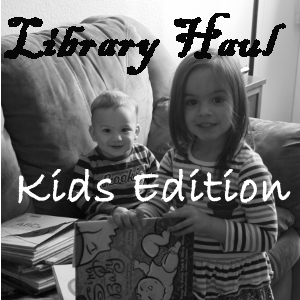
Yay! We’re finally back from our no-library induced library haul hiatus! Our local library just reopened at their new location–conveniently located within walking distance of my house (!!!) and I am extra excited to discover all the new little goodies in store for us there. But, that’s a post for another day. Without further ado, welcome back to our Kid’s Library Haul series. This is a usually-weekly series where I give you quick and snappy reviews of our favorites from our weekly library haul. We read a LOT of children’s books from the library and I like to keep things positive too, so books that I thought were terrible don’t usually make it into the list… unless I just really want to rant about it for a while. That has happened too! Let us know in the comments which books were winners in YOUR library haul!

#1. The Sugar Child by Monique De Varennes
Matine is a magical child, created by her brilliant baker father out of marzipan and his desire for a child. The problem with being made out of marzipan, of course, is that it is very fragile. She must avoid heat and rain and tears… anything that might make her marzipan melt and run away. When she finds that her friend is sick, only love can save him, and Matine from the bitter effects of her own tears.
This is a beautifully written story. It’s very classical in tone. Also a little classically morbid. I mean, a child who melts if she cries? That’s a little depressing, not going to lie. But it’s beautiful writing, and the story ends well, so I’m going to call this one a win for children’s literary fiction, and just rank it along the classic fairytales that are pretty morbid in their original, un-Disney-ified states.
We really liked it: 4 out of 5 stars

#2. D is for Dancing Dragon: A China Alphabet
Another one for the seemingly endless list of alphabet books. Someday when I have time I’m going to make up a list of ALL the alphabet books for your preschool entertainment. That day is not today. ‘D is for Dancing Dragon’ had the additional bonus of including quite a significant amount of information regarding different aspects of Chinese culture. Honestly, it was too much for us to read in one session, but we charged on through the alphabet, stopping here or there to read more about whatever caught the fancy of my Sophiapea.
We really liked it: 4 out of 5 stars

#3. Brave Girl: Clara and the Shirtwaist Makers’ Strike of 1909 by Michelle Markel
This was one of two real gems this Library Haul. Brave Girl is the true story of Clara Lemlich, an immigrant to New York, who fought to improve the working conditions of factory workers in the earliest part of the 20th century. The garment making industry was marked in its early days for using young girls and women at impossibly low wages, high standards, and back breaking conditions. Clara Lemlich helped establish the first labor unions. Nowadays labor unions do more harm than good, but in the early 1900s, they had a role to play in creating safe work environments, and they definitely succeeded.
I loved that this book took an aspect of history and introduced it as a story that young children can enjoy and learn from. If you know me or have been reading this blog long, you’ll know that I adore history. The only thing I love more than a good history book, is a great history book that might inspire some kid somewhere to love history and learn from it too.
Bonus: This is a great girl-power book. I was going to put a quote in here, but not sure whether that violates any copyright laws, so I’ll abstain until I’m more sure on the subject. Just take my word for it 😉 Get this book and read it to your children for an inspirational, educational foray into history.
We loved it: 5 out of 5 stars

#4. Night Flight: Amelia Earhart Crosses the Atlantic by Robert Burleigh
Another great win for historical, educational books that fit with the younger crowd. Night Flight tells the story of Amelia Earhart’s historic crossing of the Atlantic. Also, again with the girl-power theme.
Basically, I love this book for all of the same reasons I loved Brave Girl, probably more. Amelia Earhart is just a much more inspirational character to me than Clara Lemlich, but they both accomplished impressive things in their fields.
Airplanes are still an object of immense fascination to my little Peas, so they really enjoyed this one too.
We loved it: 5 out of 5 stars

#5. Arctic Animals by Tad Carpenter
Arctic Animals is a board book, so definitely more for the youngest crowd, but both of mine loved it. Primarily because each page is a ‘lift-the-flap’. Kids love lifting flaps in books.
I liked it because it had some variety beyond the animals one finds in most animal-related books for the youngest set. Walrus, seal, reindeer, and owls all get a great little introduction in this quick, baby-friendly read.
We really liked it: 4 out of 5 stars












